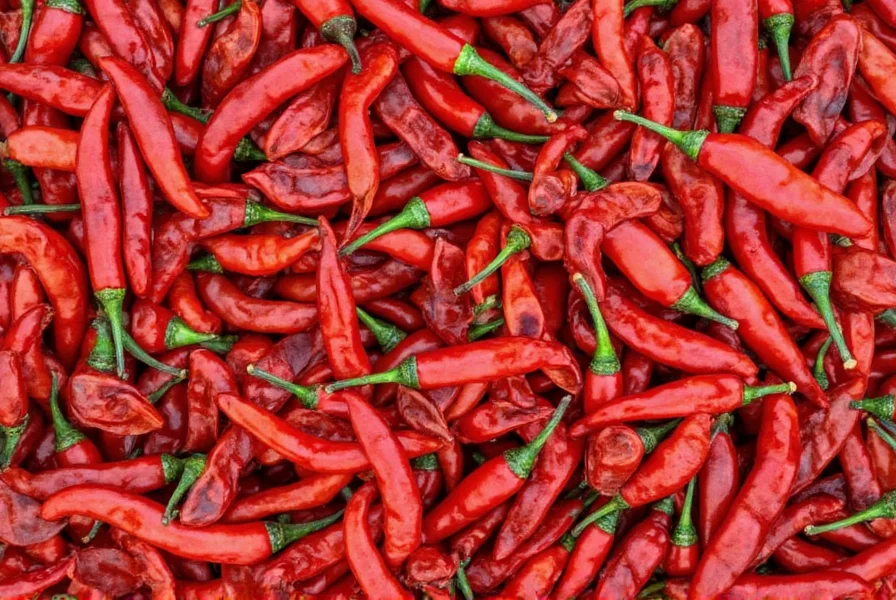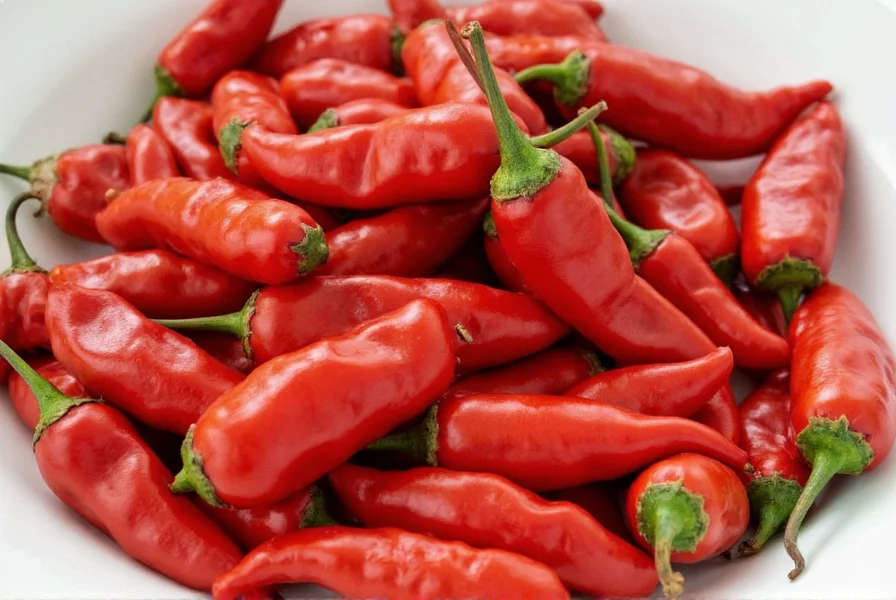Puya peppers measure 5,000-8,000 Scoville Heat Units (SHU) - slightly hotter than jalapeños but significantly milder than habaneros. This moderate heat level with gradual build makes them perfect for everyday cooking without overwhelming spice.
| Chili Variety | Scoville Heat Units (SHU) | Heat Level Comparison |
|---|---|---|
| Bell Pepper | 0 | No heat |
| Jalapeño | 2,500 – 8,000 | Mild to moderate |
| Puya Pepper | 5,000 – 8,000 | Moderate (similar to jalapeño upper range) |
| Guajillo Pepper | 2,500 – 5,000 | Milder than puya |
| Habanero | 100,000 – 350,000 | Extremely hot |
Flavor Profile: Smoky, Fruity & Earthy Notes
What truly distinguishes puya peppers is their complex flavor profile that combines:
- Smoky depth - reminiscent of sun-dried tomatoes or lightly charred vegetables
- Fruity undertones - subtle berry-like sweetness that balances the heat
- Earthy foundation - rustic notes that provide body in sauces and stews
This trifecta makes puya peppers more versatile than many chilies that lean bitter when improperly prepared. Unlike their close relative guajillo peppers (which are milder with brighter acidity), puya peppers deliver a deeper red color and more pronounced smokiness.

Puya vs Guajillo Peppers: Key Differences
| Characteristic | Puya Peppers | Guajillo Peppers |
|---|---|---|
| Size | Smaller (3-4 inches), thinner | Larger (5-6 inches), broader |
| Heat Level | 5,000-8,000 SHU (moderate) | 2,500-5,000 SHU (mild) |
| Color | Bright to deep crimson | Reddish-brown |
| Flavor Profile | More smoky, less acidic | Brighter, more tangy |
| Best Culinary Uses | Moles, red sauces, meat marinades | Salsas, adobos, lighter sauces |
Understanding these differences helps you choose the right pepper for your recipe. Puya peppers work better when you want pronounced smokiness without excessive heat, while guajillos shine in dishes requiring brighter acidity.
Top Culinary Applications for Puya Peppers
These versatile Mexican chilies excel in various cooking techniques:
- Red Mole Sauces - Provides the foundational heat and color in traditional mole negro
- Meat Marinades - The moderate heat penetrates proteins without overwhelming (perfect for carne asada)
- Salsas Rojas - Blend rehydrated peppers with roasted tomatoes for authentic table salsa
- Bean Dishes - Adds depth to refried beans or charro beans without excessive spice
- Homemade Chili Powder - Mix with cumin and oregano for authentic seasoning blend
Pro tip: Toast whole dried puya peppers for 30-60 seconds in a dry skillet before use to unlock maximum flavor. Be careful not to burn them - you should smell a pleasant smoky aroma.
Where to Buy Puya Peppers & How to Select Quality
Finding authentic puya peppers requires knowing what to look for:
Quality Indicators
- Color - Vibrant red without dark spots or fading
- Texture - Slightly flexible (not brittle or overly soft)
- Aroma - Distinct smoky scent with subtle fruitiness
- Seeds - Visible but not excessive (more seeds = hotter)
| Where to Buy | Best Options | What to Watch For |
|---|---|---|
| Mexican Grocery Stores | La Morena brand, bulk bins | Freshness date, moisture content |
| Online Retailers | Penzeys Spices, The Spice House | Harvest year, storage conditions |
| Gourmet Markets | Whole Foods, Wegmans | Price per ounce comparison |
Avoid peppers with musty odors or visible mold. Properly stored dried puya peppers maintain quality for 6-12 months in airtight containers away from light.
Frequently Asked Questions
Can I substitute puya peppers in recipes?
Yes, with these guidelines: For closest match, use guajillo peppers but increase quantity by 20%. For more smokiness, substitute half guajillo and half chipotle powder. For mole recipes, use anchos but expect fruitier results. Remember that puya's moderate heat (5,000-8,000 SHU) means you'll need to adjust quantities when substituting significantly hotter or milder peppers.
How do I properly rehydrate puya peppers?
Place peppers in a heatproof bowl, cover with boiling water (or broth for enhanced flavor), and weigh them down with a plate. Soak 20-25 minutes until pliable but not mushy. Drain thoroughly and remove stems and seeds before blending. For deeper flavor, add a teaspoon of vinegar to the soaking liquid.
Are puya peppers the same as mirasol peppers?
Essentially yes. Puya peppers come from the mirasol chili plant (Capsicum annuum) and are the dried form of fresh mirasol peppers. When you see "mirasol" on fresh pepper listings, it's the same variety that becomes puya when dried. The name "puya" specifically refers to the dried form used in Mexican cuisine.
Professional Cooking Techniques
- Toast Before Use - Heat in dry skillet 30-60 seconds until fragrant (don't burn)
- Seed Control - Remove seeds for milder dishes, keep some for moderate heat
- Layer Flavors - Bloom ground puya in oil before adding liquids for deeper flavor
- Pair Strategically - Complements chocolate, citrus, and warming spices like cumin
- Balance Acidity - Counteract with lime juice or tomatoes in sauce recipes

For restaurant-quality results, rehydrate peppers in chicken or vegetable broth instead of water. The additional umami enhances the natural flavor profile without overpowering the distinctive puya characteristics.
Proper Storage for Maximum Freshness
To maintain puya peppers' flavor and potency:
- Store in airtight glass container away from light and moisture
- Keep in cool, dark pantry (not near stove or sink)
- Add a food-safe silica packet to absorb moisture
- For extended storage (up to 2 years), freeze in vacuum-sealed bags
Check peppers periodically for mold or musty odors. Properly stored puya peppers maintain peak quality for 6-12 months. After one year, they gradually lose potency but remain safe to eat.










 浙公网安备
33010002000092号
浙公网安备
33010002000092号 浙B2-20120091-4
浙B2-20120091-4